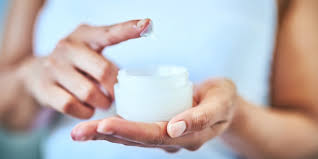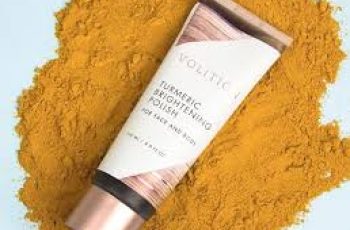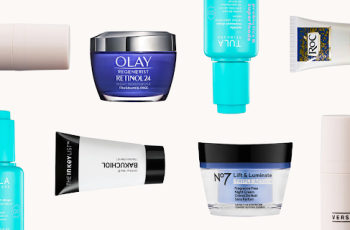
Gluten-free Skincare and Cosmetics
As a dermatologist committed to the well-being of my patients with celiac disease or wheat allergy, it’s crucial to understand how topical skincare products can affect wheat allergic people. Navigating through labels to identify gluten-containing components can be daunting but is essential to avoid inadvertent exposure to gluten. In this guide, we’ll delve into how gluten can interact with sensitive individuals, the significance of recognizing both obvious and hidden sources of gluten in skincare products, and practical tips for finding gluten-free skincare products. Our goal is to empower you with the knowledge to make informed decisions about your skincare routine, ensuring it supports your health without compromising on the quality of care for your skin.
We can help you find the best gluten-free skincare routine for your skin. Take the quiz, find your Baumann Skin Type, get our product suggestions and then you can choose gluten-free skincare from our recommended products list. You will still have to read the product labels for now, but it’s my hope that in the near future we will have a filter function where you can search just for gluten-free products that are right for your Baumann Skin Type.
Skincare with Gluten
Many skincare products contain wheat derived ingredients. If you have sensitivity to gluten and want to avoid gluten in skincare, this is the master list of INCI names of gluten containing ingredients on skincare product labels. However, keep reading this blog after you see the list because some of these ingredients can be sourced in a gluten-free manner.
There is limited research directly addressing the effects of topical gluten on individuals with celiac disease. However, the prevailing scientific view suggests that gluten must be ingested to cause a celiac disease response. This perspective is supported by the current understanding of celiac disease pathophysiology, where gluten peptides interact with the immune system in the gastrointestinal tract.
Gluten-free Skincare
We used AI to scan all of the ingredient labels of the products in our online store to find gluten-free products. We did not contact the manufacturers, so to know for sure we advise that you contact them to make sure. But we feel fairly certain that these are gluten free products.
Take our skin type quiz to diagnose your Baumann Skin Type and build a custom skincare routine. After the quiz you will be given a step by step skincare routine with a list of products that are right for each step. You can choose any gluten-free skincare options on the list.
What skin type am I?
Gluten-free Soap and Cleansers
These are the medical grade gluten free soaps, face washes, and cleansers that we found.
coming soon!
Gluten-free Moisturizers
Dry skin types need barrier repair moisturizers while oily types need lighter noncomedogenic moisturizers. These are the best gluten-free face creams and lotions.
Gluten-free Barrier Repair Moisturizers
Gluten-free Noncomedogenic Moisturizers
Gluten-free Lip Balms and Lipsticks
Gluten free eyeliner
List of Skincare Ingredients With Possible Gluten
These are the INCI names for wheat and gluten containing cosmetic ingredients to look for on product labels:
Avena Sativa (Oat)
Cyclodextrin
Dextrin
Dextrin Palmitate
Glycine Soja Seed Extract
Xanthium Strumarium Fruit Extract
Fagopytum (Buckwheat) Leaf Extract
Lactobacillus/Oat/Rye/Wheat Seed Extract Ferment
Hydrolyzed Vegetable Protein
Hydroxypropyltrimonium Corn/Wheat/Soy Amino Acids
Hydroxypropyltrimonium Hydrolyzed Wheat Protein/Siloxysilicate
Lactobacillus/ Oat/ Rye/ Wheat Seed Extract Ferment
Lactobacillus/ Rye Flour Ferment
Lactobacillus/ Rye Flour Ferment Filtrate
Laurdimonium Hydroxypropyl Hydrolyzed Wheat Amino Acids
Malt Extract
Maltodextrin
Sodium Lauroyl Oat Amino Acids
Beta Glucan (Oat)
Sodium Lauroyl Oat Flour
Phytosphingosine
Polygonum Aviculare Extract
Potassium Cocoyl Hydrolyzed Oat Protein
Secale Cereale (Rye) Seed Extract
Secale Cereale (Rye) Flour
Saccharomyces/ Barley Seed Ferment Filtrate
Secale Cereale (Rye) Phytoplacenta Placenta Culture Extract Filtrate
Sodium C8-16 Isoalkylsuccinyl
Sodium Wheat Germanphoacetate
Stearyl Dimonium Hydroxypropyl
Steardmnonium Hydroxypropyl Hydrolyzed Wheat Protein
Tocopherol Acetate
Triticale
Triticum Aestivum (Wheat) Flour
Triticum Boeoticum
Triticum Carthlicum
Triticum lipids
Triticum Monococcum
Triticum Turgidum Durum (Wheat) Seed Extract
Triticum Vulgare
List of Ingredients That Always Have Gluten
Any ingredient clearly naming wheat, rye, barley or related species as the source will definitely contain gluten proteins. There is no way to derive extracts from these grains without including their signature gluten compounds.
Hydrolyzed Wheat Protein – Contains proteins derived from wheat gluten through an acid hydrolysis process.
Triticum Aestivum (Wheat) Flour – Wheat flour contains gluten proteins.
Triticum Durum (Wheat) Seed Extract – Extracts derived from wheat seeds contain gluten.
Triticum Vulgare – A species of wheat that contains gluten proteins.
Secale Cereale (Rye) Extract – Rye is a grain closely related to wheat that contains gluten proteins like secalin.
Hordeum Vulgare (Barley) Extract – Barley is a gluten grain that contains hordein proteins.
Malt Extract/Maltodextrin – Usually derived from barley so contains hordein gluten proteins.
Lactobacillus/Wheat Seed Extract Ferment – Bacteria fermentation of wheat sources produces compounds with gluten.
These Ingredients May Have Gluten
Oats, cyclodextrin, vegetable proteins, and vitamin E may or may not contain gluten. They have a variable content of gluten. The gluten content in ingredients like tocopherol (vitamin E) listed below can vary depending on the source. If tocopherol is derived from wheat germ oil, it may contain gluten. However, tocopherol derived from other sources, such as soy, is considered safe. It underscores the importance of manufacturers disclosing the source of such ingredients to help consumers make safe choices. It is impossible to know by reading the product label, so you have to ask the skincare brand if their product is gluten free.
These ingredients may or may not have gluten depending upon the source
Avena Sativa (Oat) Extract – Oats do not naturally contain gluten but could be cross-contaminated. Oat extracts sourced from certified gluten-free oats should be safe.
Cyclodextrin/Dextrin – Made from starch so could come from wheat but not always. Need to verify the source.
Hydrolyzed Vegetable Protein – Could contain protein from wheat but if made with corn/soy only, may be gluten free.
Lactobacillus/Oat/Rye/Wheat Seed Extract Ferment – Bacteria ferments likely contain gluten sources like wheat.
Malt Extract/Maltodextrin – Usually made from barley which contains gluten.
Sodium Lauroyl Oat Amino Acids/Oat Flour – As with oats, could be cross-contaminated.
Rye (Secale Cereale) Extracts – Rye contains gluten proteins.
Tocopherol Acetate – Vitamin E from wheat germ oil would have gluten but other vegetable oil sources would be fine.
Skin Absorption of Gluten
While gluten is unlikely to be absorbed through the skin due to its large molecular size, individuals with celiac disease or wheat allergies are advised to opt for gluten-free skincare products. This precautionary measure is recommended to avoid any risk of gluten transfer to the mouth or eyes, which could lead to systemic absorption and potentially trigger an allergic reaction or celiac response.
Celiac Disease and Skincare
For those living with celiac disease, the ingestion of gluten triggers an autoimmune response that can damage the small intestine. Therefore, choosing skincare products that are explicitly labeled as gluten-free can minimize the risk of accidental gluten ingestion. It’s also wise to be cautious with products applied near the mouth or on the hands, which could easily come into contact with food.
Research Studies
Summaries of studies of the effects of gluten on skin. These studies show the benefits of wheat and gluten on skin:
1. A 2008 study by Akhtar and Yazan explored the moisturizing effects of a stable emulsion with vitamin C and wheat protein on the skin, showing increased skin moisture. (10)
2. Demidov et al.’s 2008 research on fermented wheat germ extract (Avemar) highlighted its positive impact on melanoma patients’ survival, suggesting its potential as an adjunct therapy.(11) Obviously wheat and gluten will not cure melanoma but I include this just to be complete.
Studies showing downsides to using gluten and wheat on skin:
Codreanu et al. warned against the use of food proteins, including wheat in products for neonates and infants with atopic dermatitis due to the risk of sensitization. (12)
Fukutomi et al.’s 2014 study linked the use of facial soaps containing hydrolyzed wheat protein to a higher risk of wheat allergy. (14)
Laurière et al. in 2006 discussed the augmented allergenicity of hydrolyzed wheat proteins in cosmetics, leading to contact urticaria and possibly preceding food allergies. (19
Studies that showed the effects of gluten in the diet on skin:
1. Bonciolini et al. in 2015 showed improvement in patients with non-celiac gluten sensitivity and skin lesions after starting a gluten-free diet. (13)
2. In a 2011 study by Celakovská et al., researchers examined the effects of wheat allergy on atopic eczema in 179 adults through multiple testing methods, including double-blind, placebo-controlled food challenge tests. They discovered that wheat allergy exacerbated the condition in 4.5% of the participants, indicating a direct impact of wheat on the progression of atopic eczema. This study highlights the importance of identifying potential dietary triggers in managing skin conditions effectively. (18)
These studies collectively underscore the complex relationship between topical wheat/gluten exposure and various skin reactions, especially among sensitive and allergic individuals.


